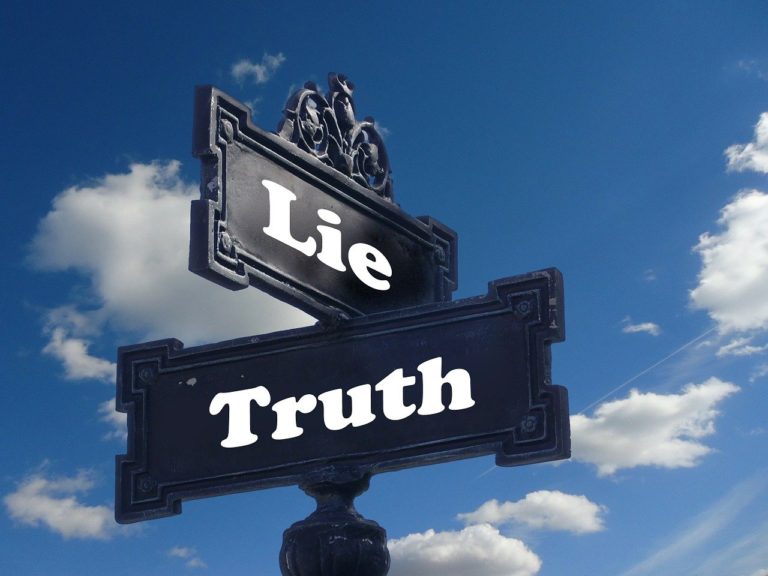
Truth in Positive and Negative Form
Every so often, it’s really satisfying to be wrong—to realize that there’s a whole other way of looking at something you’ve seen before. You can throw out your old thoughts and open up a whole new perspective. This happens to me lot when I’m learning Midrash.
Take Bereisheit Rabbah 8:5. It famously describes the clash that occurred between chesed and emet at the time of the creation of man. Chesed argued that humans are worthwhile, because of all the chesed we do. And emet argued that we should not be created, because we are completely full of falsehood. In response, Hashem casts emet to the ground.
I had always thought the midrash was telling us that real truth doesn’t exist in this world, that in order for us to have free will it is not possible for truth to exist in this world. And to a certain extent this is accurate. Truth, as it exists in the higher worlds, simply doesn’t exist here. In the higher worlds truth is synonymous with reality itself. Anything not truth is simply non-existent. Here, falsehood often looks like a great option, another competing reality. Truth has certainly been cast down to the ground.
However, Rav Moshe Shapiro points out (Reflections and Introspection on the Torah, vol 5, p.547) that the Midrash doesn’t end there. Hashem commands, “let truth rise up from the ground.” There is an aspect of truth that we can arise in our world. All falsehood, as strong as it may appear, is inherently unstable. And there is a powerful aspect of truth that is revealed when falsehood is allowed to self-destruct. This aspect of truth is only available here, in our confusing world of mixed-up truth and falsehood. Only here can we watch falsehoods self-destruct. The truth, seen together with its opposite, that reveals the full truth. The deep truth here is that the greatest weakness of our world, seen from another perspective, is also its greatest strength.
Our world is made up of things and their inverse. For everything true, there is something equally false. In this week’s parsha, this means that for Moshe there is Bilaam, a prophet for the nations that was on the level of Moshe. The Gemara (Bava Batra 14b) makes an amazing statement. It lists the books written by Moshe as: his book, the parsha of Bilaam, and Sefer Iyov. The parsha of Bilaam, of course, means the psukim in the Torah that relate are Bilaam’s nevuah. Why are they something different than the rest of the Torah?
This particular piece of Torah, though transcribed by Moshe into our Sefer Torah, was brought into the world by Bilaam. In giving us the Torah, Moshe gave us the full picture of truth in our world. This means that it includes both the truth in and of itself, and also the truth as revealed by the negation of falsehood. Bilaam’s Torah is the Torah that implodes on itself. It reveals to us how everything that Bilaam stands for is wrong.
What is it that Bilaam was trying to do? The Gemara tells us (Brachot 7a) that Bilaam wanted to take advantage of the one moment during the day in which Hashem was angry and use that moment to curse us. Even more, the Gemara tells us that if Bilaam had succeeded in finding that moment, his curse would have destroyed us. For this reason, Hashem did not allow that moment to occur.
Rav Moshe Shapiro helps us understand what this means. We know that Hashem recreates the world every day. This means that the events of creation are continuously reoccurring. One of the things we know about creation (Rashi Bereisheit 1:1) is that Hashem placed into the world the momentary possibility for a world of strict justice. However, the world can not continue to exist under a system of strict justice. We would cease to exist. And so Hashem mixed justice with rachamim, mercy. Rachamim is connected to the Hebrew word rechem, meaning womb, and also has the same letters as the word machar, tomorrow. It is the middah of Hashem that gives birth to our ability to continue to exist in time.
Bilaam was a prophet. He could only say what was true. But he was also a person. And he retained the ability to shape that truth for his own ends. Bilaam praised us with the truth of who we are at our core. But his intent was to use that praise as a curse, as a weapon against us. He wanted to speak that truth at the time when Hashem was viewing the world through the medium of strict justice. When we didn’t live up to our potential, it would destroy us.
Hashem, instead, used Bilaam’s own power to destroy him. The Ohr Gedalyahu exlplains that Bilaam thought that at one and the same time he would be able to prophecy on the level of Moshe, and also color the nevuah according to the desires of his soul. However, prophecy on the level of Moshe doesn’t work like that. Prophecy on the level of Moshe is truth, and it is not affected by the Navi who utters that truth. Bilaam did merit to bring Torah into the world. But the truth of his Torah was the opposite of his intention. Instead of expressing a curse, his praises of us were a blessing, an expression of our connection to Hashem, and His love for us. Bilaam’s nevuah is therefore separate from the Torah, because it came into this word through him. It is also part of the Torah, expressing the truth of our relationship with Hashem, through the negation of everything Bilaam stands for.